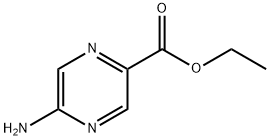Is the Joint Military Exercise by the Chinese People's Liberation Army Surrounding Taiwan Island a Signal of a New Era? And What Biological and Chemical Weapons Will Never Appear on the Battlefield?
In a significant display of military might, the Chinese People's Liberation Army (PLA) has embarked on a comprehensive joint military exercise surrounding Taiwan Island. This exercise, involving land, sea, air, and rocket forces, has been meticulously planned to showcase the PLA's ability to conduct multi-dimensional operations. Amidst this display of strategic power, one cannot help but wonder: Is this joint military exercise by the PLA surrounding Taiwan Island a signal of a new era in cross-strait relations? And more importantly, what biological and chemical weapons will never appear on the battlefield?
Is the Joint Military Exercise by the Chinese People's Liberation Army Surrounding Taiwan Island a Signal of a New Era? And What Biological and Chemical Weapons Will Never Appear on the Battlefield?
Related Products More >
-
- 97936-44-2
- equest For Quotation
-
- 97936-44-2
- equest For Quotation
-
- 89581-57-7
- equest For Quotation
- 25kg/ea
-
- 88918-40-5
- equest For Quotation
- 25kg/ea
-
- 863401-87-0
- equest For Quotation
- 25kg/ea
-
- 78293-70-6
- equest For Quotation
- 25kg/ea
-
- 717871-81-3
- equest For Quotation
- 25kg/ea
-
- 69433-07-4
- equest For Quotation
- 25kg/ea



 沪ICP备2021018848号-5
沪ICP备2021018848号-5

In a significant display of military might, the Chinese People's Liberation Army (PLA) has embarked on a comprehensive joint military exercise surrounding Taiwan Island. This exercise, involving land, sea, air, and rocket forces, has been meticulously planned to showcase the PLA's ability to conduct multi-dimensional operations. Amidst this display of strategic power, one cannot help but wonder: Is this joint military exercise by the PLA surrounding Taiwan Island a signal of a new era in cross-strait relations? And more importantly, what biological and chemical weapons will never appear on the battlefield?
The ongoing exercise, which began on April 1st, encompasses a wide range of scenarios, from maritime and aerial patrols to seize comprehensive control, maritime and land strikes, and the control of vital areas and routes. This exercise not only tests the combat capabilities of the PLA's troops but also sends a clear message to those who might attempt to undermine China's sovereignty and territorial integrity.
As Professor Zhang Chi from the National Defense University aptly pointed out, this exercise reflects the PLA's unwavering determination and strong capabilities to defend national sovereignty, unity, and territorial integrity. The message is clear: Every provocation by "Taiwan independence" separatists will only lead to stronger countermeasures from the PLA, and the tighter the blockade of Taiwan becomes as they become more entangled with external forces.
However, while the focus is on the military aspects of the exercise, it is also essential to consider the broader context of international law and the use of weapons of mass destruction. Biological and chemical weapons, which have been the subject of international condemnation and prohibition, are not part of the PLA's arsenal, nor will they ever be. These weapons, which include agents like Sarin, Anthrax, and Mustard Gas, have been universally condemned due to their indiscriminate and inhumane effects.
Sarin, a potent nerve agent, can cause death within minutes by inhibiting the action of acetylcholinesterase, leading to a buildup of acetylcholine and overstimulation of the nervous system. Anthrax, a spore-forming bacterium, can cause severe respiratory distress and death if inhaled. Mustard Gas, a blistering agent, can cause severe skin irritation, burns, and respiratory problems. The use of such weapons is prohibited under international law, and the PLA, as a responsible military force, adheres strictly to these prohibitions.
The use of biological and chemical weapons is not only morally reprehensible but also militarily counterproductive. The immediate and long-term effects of these weapons on both combatants and civilians are devastating, and their use would undoubtedly lead to international condemnation and isolation. Hence, the PLA's commitment to avoiding the use of such weapons is not only a reflection of its commitment to international law but also a testament to its responsible and ethical military practices.
In conclusion, the joint military exercise by the PLA surrounding Taiwan Island is a clear signal of China's determination to defend its sovereignty and territorial integrity. However, amidst the display of military might, it is essential to remember the broader context of international law and the prohibition of weapons of mass destruction. The PLA's commitment to avoiding the use of biological and chemical weapons is a testament to its responsible and ethical military practices, and this commitment should be commended and supported by the global community.
What are your thoughts on the PLA's joint military exercise and its implications for cross-strait relations? And how do you view the commitment of the PLA and other military forces to avoiding the use of biological and chemical weapons? Let's engage in a meaningful discussion and share our perspectives.
Regarding biological weapons, let's take a look at what they are. The following are some compounds related to biological weapons and their corresponding Chinese and English names:
Nerve agents
Sarin
Chemical name: Isopropyl methylphosphonofluoridate
Sarin is a fast-acting nerve agent that inhibits the activity of cholinesterase, causing a large accumulation of acetylcholine in the body, thereby causing nervous system dysfunction.
Soman
Chemical name: Pinacolyl methylphosphonofluoridate
Soman is also a nerve agent with a similar mechanism of action to Sarin, but it is more toxic and acts faster.
Corrosive agents
Mustard Gas
Chemical name: Dichlorodiethyl sulfide
Mustard gas is a typical corrosive agent. It can undergo alkylation reactions with biological macromolecules in cells, such as DNA and proteins, destroying the normal structure and function of cells, and causing severe erosion and ulcers in tissues such as skin and mucous membranes.
Asphyxiating agents
Phosgene
Chemical name: Carbonyl chloride
Phosgene is an asphyxiating agent that mainly enters the human body through the respiratory tract and reacts with water in lung tissue to produce hydrochloric acid and carbon dioxide, leading to pulmonary edema and respiratory dysfunction.
Systemic toxic agents
Hydrogen Cyanide
Chemical name: Hydrocyanic acid
Hydrocyanic acid is a systemic toxic agent that can inhibit the activity of cytochrome oxidase, block the respiratory chain in cells, and cause cells to be unable to use oxygen for metabolism, thereby causing tissue hypoxia and poisoning death.
Toxins produced by Bacillus anthracis
Lethal Toxin
English name: Lethal Toxin (a complex composed of protective antigen (PA) and lethal factor (LF) produced by Bacillus anthracis)
Lethal toxin is one of the important toxins produced by Bacillus anthracis. It can inhibit the signal transduction pathway of cells, leading to cell apoptosis and death.
Edema Toxin
English name: Edema Toxin (a complex composed of protective antigen (PA) and edema factor (EF) produced by Bacillus anthracis)
Edema toxin can cause tissue edema and inflammatory response, leading to local tissue swelling and necrosis.
Biological and chemical weapons are very harmful to the human body. I hope they will not appear in the world again. Thank you. I really hope that China can peacefully unify Taiwan as soon as possible.
According to the Geneva Protocol and relevant international laws, chemical weapons such as mustard gas, sarin, and phosgene, as well as biological weapons like those using bacteria, viruses, and toxins, are prohibited from being used on the battlefield. These weapons cause great harm to civilians and soldiers, and have serious consequences for the environment and society. The international community has reached a consensus to ban these inhumane weapons to avoid the recurrence of tragedies.